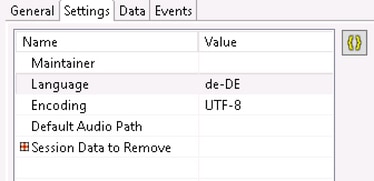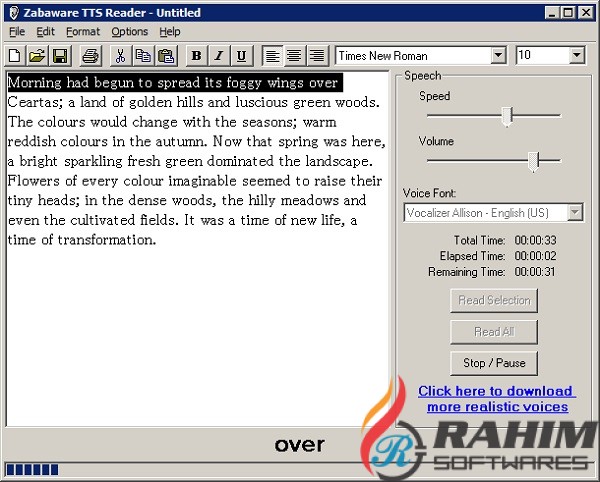

Select the EXE file to install the voice onto the PAC Mate Omni from your computer using ActiveSync or Windows Mobile Device Center.

You can choose to download each voice as either an EXE or CAB installer. For more information on configuring the secondary voice, refer to the PAC Mate Omni documentation. Once a voice is installed, you can open the Voice Settings dialog box, move to the Secondary page, and configure it as your secondary voice, which is active when you use INSERT+S, L on the QX or S CHORD, L on the BX to toggle between the primary and secondary voice.

Additional Eloquence languages are always installed to main memory, and each language will occupy between 1.5 and 2 MB of space. If you intend to install more than one voice, it is recommended that you install them onto a CompactFlash card, as each voice requires at least 10 megabytes of storage space. The RealSpeak Solo voices can be installed into main memory or on a CompactFlash® card. The Eloquence language modules can be installed on any version of PAC Mate Omni as well as older PAC Mates running a release no earlier than 2.5. To use any of the RealSpeak voices, you must be running PAC Mate Omni release 6.5 or later. What voice do you want to hear coming out of your Mac or iOS device speakers in the future? Let us know in the comments.RealSpeak Solo and Eloquence Languages for PAC Mate Omni My current favorite on the list is Karen, the Australian English female voice. If you have a hankering to hear just how good these voices are, OS X Daily has linked to a number of samples that are available on the NextUp Nuance Sample page, some of which are listed below:

These voices are a good improvement on the existing voices used by Mac OS X, and could point to a greater use of speech recognition and TTS as a user interface feature in Lion and iOS 5. As we reported on May 14, Lion Developer Preview 3 includes a number of voices from Nuance's RealSpeak Solo software that can be used for text-to-speech (TTS) operations in the OS.


 0 kommentar(er)
0 kommentar(er)
